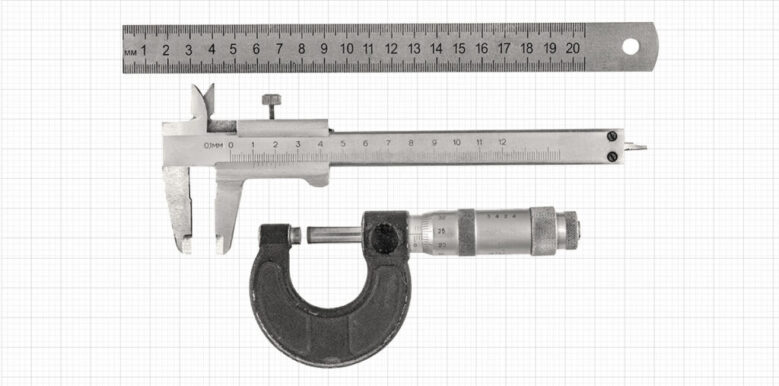We are talking about graduation today. No, not the cap and gown kind that you remember from high school. We are referring to the graduation scale on precision measurement tools. As usual, we at Higher Precision believe there is not topic too small, literally or figuratively, to cover. Every detail of precision measurement is important for a job well done, and understanding the nuances of graduated scales is no different.
The term graduation refers to the marking present on a measurement instrument that signifies a particular space or distance. The graduation indicates the measurement. There are two different kinds of graduation, linear graduation and curved graduation. Whenever the instrument is straight in shape, such as a ruler, then there will be linear graduation. These can be linear in nature, such as the common inches or millimeters on a ruler or tape measure, or they can be non-linear in nature. The non-linear graduations are typically either logarithmic scales, which are based on orders of magnitude, or transcendental scales, which are based on algebra independent from the variable. Volumetric graduations also fall within the title of linear graduations, and are used to measure a particular volume of liquid at a particular temperature. Curved graduations are typically seen on a circular limb or offshoot of a measurement instrument. There are both non-circular and circular graduations. The circular graduations tend to divide up angular space, as is done by degrees and seconds.
Graduations can be made using a couple of different methods and are usually classified based on their style. The marks signifying different graduations can be put on an instrument through etching or engraving, as well as through printing or painting. Etching and engraving is preferable because these marks will last longer and ensure more accurate measurements in the long term. Sometimes both an engraving and paint or ink are combined to better mark the surface. Additionally, some higher-grade measurement tools are even built with a double layer of plastic or glass to protect the graduation marks. Graduation styles are demarcated using a number and the letter R. For example, a graduation of 3R shows 1/10th, 1/32nd, 1/50th, and 1/64th increments; 4R shows 1/8th, 1/16th, 1/32nd, and 1/64th increments; 5R shows 1/10th, 1/32nd, 1/64th, and 1/100th increments; and 16R shows 1/32nd, 1/50th, 1/64th, and 1/100th increments.
Graduated measurement instruments are vital to both precision and accuracy. The degree of sensitivity of a graduated instrument increases as the distance between graduations decreases. The overall accuracy of a measurement using a graduated instrument is impacted by a few important factors. The original graduation measurements must have been accurate themselves, the degree of resolution on the marks needs to be high, and the mark lines must not be too thick or poorly defined in order to ensure higher accuracy. Basically, the graduation marks themselves hold a great deal of power when it comes to the final measurement taken from the tool they are on. There is also potential for observational or user error when reading off the graduation marks. However, the best practice is to start with the best made graduation marks possible.
The graduation of an instrument, while simple in concept and design, is incredibly important in the final accuracy of a measurement. Understanding how they are made and work, as well as knowing how to judge their quality will help any metrologist when choosing an instrument that includes graduation marks. In the end, the better the graduation on your precision measurement tool, the greater the accuracy of your measurements.

